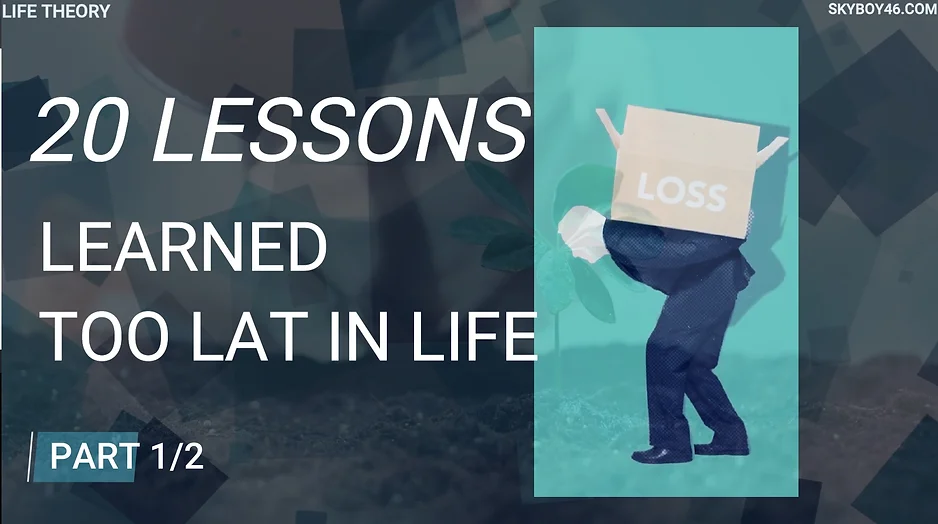Don’t Want To Read?
Watch/Listen To The Full Video on YouTube
There was a time when violent crime ruled the headlines, and serial killers lurked in the shadows. What fueled this dark period, and why did it eventually fade? From war trauma to hidden toxins in the environment, the causes were more complex than simple evil. As we unravel the past, we may discover that the line between chaos and order is thinner than we think.
SUBSCRIBE: https://www.youtube.com/@LifeTheory46
The Rise and Fall of a Violent Era – Life Stories 311
The title may catch you off guard, but today we’re diving into a topic we rarely touch: the age of violent crime. We’re not here to sensationalize, but rather to understand the bigger picture—what drives an era of heightened brutality, and why do such dark trends eventually fade? In exploring the years when violence seemed to have its own pulse, we might just uncover the ripples of small actions that set off a cascade of societal shifts.
From the 1970s to the turn of the millennium, America was gripped by a period now ominously referred to as the “Golden Age” of serial murder. These were the decades when the likes of the Night Stalker, the Hillside Strangler, and other infamous killers became household names. It was a time of fear, where even the simple act of leaving your door unlocked or hitchhiking became unthinkable. Violent crime skyrocketed, and serial killings reached unprecedented levels. By the late 1990s, though, this wave of terror began to subside, with known serial murders in the U.S. dropping by more than 90%. What sparked this haunting chapter in history, and why did it suddenly lose its grip?
Author Peter Vronsky, who chronicled this unsettling time in his book, suggests a web of interconnected causes—sociological shifts, biological factors, technology, and even the subtleties of cultural evolution. To understand what ignited this trend, we need to trace back to the formative years of those who became the era’s most notorious figures. For many of these individuals, their tendencies took root by age 14. Most of them were born soon after World War II, growing up amidst the turmoil and tension of the 1950s and 60s. It’s no coincidence that several had fathers who returned from war carrying the heavy burden of untreated PTSD.
At that time, the trauma of war wasn’t widely acknowledged; PTSD wouldn’t even be officially recognized until the 1980s. Fathers returned from the battlefields as altered men, and their unresolved violence often spilled over into the home. Children raised in these unstable environments faced a unique set of challenges—exposed to violence from an early age, they were left vulnerable to dark psychological pathways. But not every child growing up in a dysfunctional family became a serial killer. What was it that pushed some over the edge while others found a way to live within the lines of society?
Neuroscientist James Fallon delved into this question in his work, exploring the anatomy of psychopathy. His findings reveal that those with certain personality disorders, particularly psychopathy and sociopathy, are biologically inclined toward aggression. Their brains are wired differently, with a diminished capacity for empathy, fear, and anxiety—traits that usually inhibit violent behavior in others. Fallon, who discovered his own brain fit the profile of a psychopath, credits his stable upbringing for steering him away from criminality. In the right environment, these neurological traits can be tempered, but combine them with a chaotic home life, abuse, and neglect, and you get a recipe for disaster.
Among all the killers Fallon studied, a disturbing pattern emerged: nearly all had experienced severe abuse before the age of three. The amygdala, the part of the brain responsible for processing fear and emotional memories, was often smaller in these individuals, affecting their ability to experience fear or recognize it in others. For them, the concept of danger was abstract; they simply couldn’t grasp the emotions that govern most people’s behavior. Statistically, 86% of serial killers exhibit psychopathic traits, while another 9% show some of these characteristics without fitting the full profile. However, not all psychopaths become murderers—most live within society, struggling to understand the emotions that come naturally to others.
Vronsky proposes that serial killers might be anachronisms, echoes of a time when humans needed to kill for survival. Back then, aggression and violence were survival strategies. Today, though, we’ve evolved ways to moderate those impulses through parenting, education, and social structures. The world no longer has room for unchecked brutality, and our collective understanding of mental health and trauma has grown to help rein in these darker instincts.
But the spike in violent crime during those decades wasn’t limited to serial killers. It was a time marked by widespread cruelty and brutality across the board, and another factor played a silent but deadly role: lead poisoning. Journalist Kevin Drum pointed out that lead exposure correlated almost perfectly with the rise and fall of crime rates. Children who ingested lead from automobile emissions in the 1940s and 50s reached adulthood in the crime-heavy years of the 60s, 70s, and 80s. Lead was known to be toxic even in ancient times, but the full scope of its dangers was dismissed as modern industry pushed for its use.
Tetraethyl lead was added to gasoline in the 1920s to improve engine performance. Despite early signs of harm, production went ahead because the symptoms of lead poisoning—brain damage, reduced impulse control, and aggressive behavior—developed slowly and weren’t immediately apparent in short-term studies. Research later confirmed what many already suspected: lead disrupts brain functions critical for emotional regulation, reasoning, and self-control. It leaves a lasting impact, especially on young children whose developing brains are most vulnerable.
The evidence stretches beyond the U.S., with countries and regions showing higher crime rates in places where lead use persisted longer. Lead pollution spread everywhere, like an invisible plague, and its consequences emerged in the lives it disrupted and the communities it tore apart.
The factors contributing to the violent crime wave were complex and intertwined. Whether it was war-related trauma, genetic predispositions, or the insidious effects of lead, these conditions collectively formed a breeding ground for criminal behavior. It’s crucial to acknowledge that violent individuals are not born that way; they are shaped by a mix of environmental, biological, and social influences. And while some people emerged unscathed from harsh environments, others spiraled down paths of destruction.
The responsibility to change this narrative falls on all of us. It starts at the top, with holding corporations and governments accountable for the chemicals and pollutants they release into our world. The decisions to allow harmful substances like lead into our lives must be challenged with stringent research and genuine concern for public safety. At a grassroots level, we need to stop treating at-risk youth as lost causes, written off before they ever get a fair shot. Early intervention, mental health support, and a chance at real opportunity can shift the course of a life.
The era of violent crime wasn’t an inevitable outcome—it was the product of a perfect storm, a combination of missteps and overlooked warning signs. Now, with hindsight, we must recognize the weight of our choices and the responsibility to build a safer, more conscious society. Because, in the end, criminals are not just made by their circumstances; we are the makers of the world in which they grow.
–> Read More Life Stories Here:
https://www.lifetheory.us
https://www.lifetheory.eu
Buy all of our Life Stories & Our Premium Learning Packs. Listen or Read to them anytime you want. Have them Forever.
You can get each monthly lesson on our website at https://www.skyboy46.com/store
SHARE THIS STORY
Visit Our Store
SHOP NOW
www.skyboy46.com & www.myskypet.com
Designed For Pet Lovers & Introverted Souls
Sport, Hobbies, Motivation, Music & Art






~EXPLORE MORE~
www.linktr.ee/skyboy46


